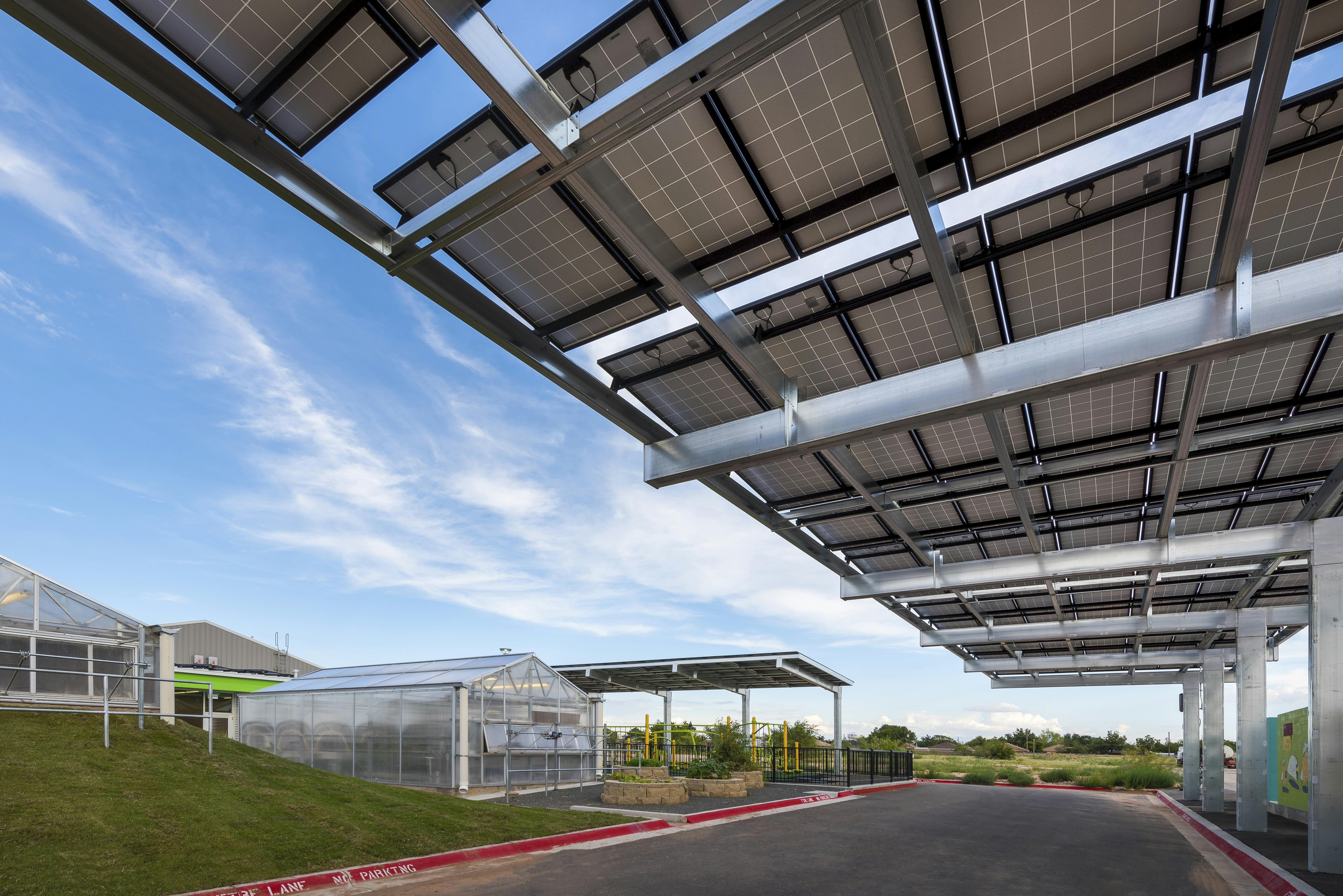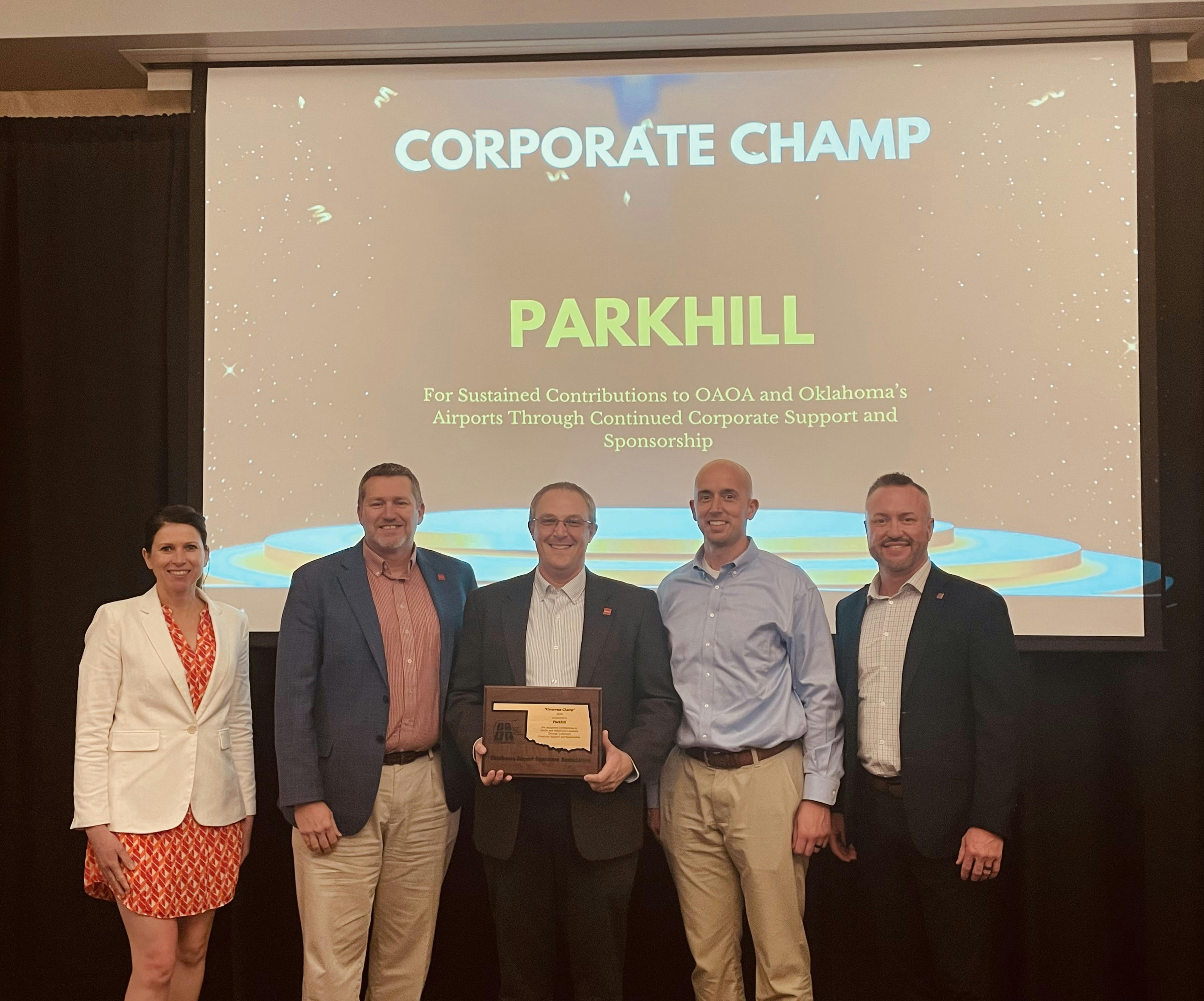Parkhill Continues Pledge to AIA 2030 Commitment
Category: Building Community
Written By: Steven Holmes, AIA
Date: April 19, 2024

Globally, buildings contribute 40% of carbon emissions through heating, cooling, lighting, and other operations. Considering this, Parkhill's role in addressing climate change has never been more critical. As a multidisciplinary firm, we have the unique opportunity to make a lasting impact that extends beyond individual projects into engagement, advocacy, and urban planning.
Parkhill is a proud signatory of the AIA 2030 Commitment, one of the most significant initiatives in the architecture, engineering, and construction industry. This commitment transforms our approach to building projects, emphasizing transparency as we share our progress toward meeting energy reduction targets and our insights into challenges and opportunities moving forward.
Participation through the American Institute of Architects (AIA) 2030 Commitment is one strategy we have taken to address climate change. As one of more than 1300 firms who have signed this pledge, we have also taken a proactive step of completing our own Sustainability Action Plan in 2022.

What is the AIA 2030 Commitment?
The AIA 2030 Commitment was established to support the 2030 Challenge, an ambitious initiative set forth by the nonprofit Architecture 2030. This challenge aims to cut carbon emissions from the design and construction industry by 2030, pushing for reductions in site Energy Use Intensity (EUI) and promoting on-site renewable energy production. The standards become more stringent every five years, guiding us to carbon-neutral developments in 2030. Currently, the Challenge aims for us to be at 90% in 2025. The AIA's 2030 Commitment helps firmwide adoption, data tracking, and reporting, aligning with the goals of the 2030 Challenge. Participating firms, including Parkhill, track their projects and contribute to a database that fosters knowledge sharing and industry-wide progress.
AIA 2030 Commitment and Parkhill
The AIA releases a yearly aggregate report detailing progress in meeting energy reduction targets. While there have been notable improvements over the years, there is still work to meet the ambitious goals of the 2030 Challenge. Since the beginning of the 2030 Challenge, the number of reported square footage has increased, meaning more firms are taking part in the Challenge. AIA reported a 38% reduction in 2015, and since then, they reported a 51% reduction in 2020. In addition to the national average, the AIA breaks numbers down by state. Currently, Texas reports a 44% reduction, Oklahoma reports a 43% reduction, and New Mexico reports a 52% reduction. Parkhill has reported a 46.19% reduction in 2022, showing advancement on the correct path, but also highlighting areas for improvement.

Parkhill Design Excellence
Integrating design excellence at Parkhill with the 2030 Commitment provides a pathway toward a net-zero future, reshaping our internal and external dialogue surrounding high-performance design. Projects that hold a LEED certification, such as the Buddy Holly Hall, are a fitting example of how to maintain high design standards while still adhering to the AIA 2030 Commitment.

Steven Holmes, AIA, LEED AP, WELL AP, is an architect in Parkhill’s Community Sector with experience in Federal, K-12, Religious, and a variety of Private Sector work. His portfolio includes the design and successful execution of international projects across Africa, Asia, Europe, and North America. As a LEED and WELL Accredited Professional, Steven actively contributes to sustainability initiatives within Parkhill.

